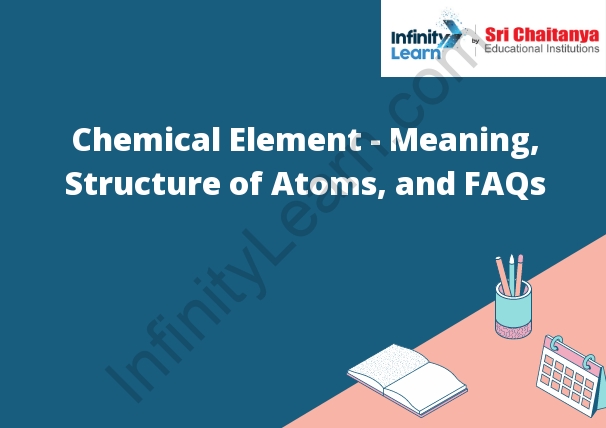Table of Contents
What is the Chemical Element? ;
The chemical element is a fundamental component of matter. There are over 100 known chemical elements, and each one is distinguished by its atomic number. Atoms of different elements have different numbers of protons in their nucleus, and this is what makes them unique.

Atomic Nature of the Elements
The atomic nature of the elements means that all substances are composed of atoms. These atoms are the smallest particles of an element that have the chemical properties of that element.
Structure of Atoms
Atoms are the smallest particles of an element that have the chemical properties of that element. They are made up of protons, neutrons, and electrons. The number of protons in an atom determines what element it is. The number of neutrons can vary, but the number of electrons is always the same as the number of protons.
The Existence of Isotopes
Isotopes are atoms of the same element that have different numbers of neutrons in their nucleus. For example, carbon-12 has 6 neutrons, while carbon-13 has 7 neutrons. Isotopes have the same chemical properties, but different physical properties.
Origin of The Elements
The question of the origin of the elements is one that has puzzled scientists for centuries. The elements are the fundamental building blocks of matter, and they are found throughout the universe. The elements are created by stars, and the process by which they are created is called nuclear fusion.
Stars are made of hydrogen and helium. Hydrogen is the simplest element, and helium is the second simplest. The fusion of hydrogen and helium into heavier elements is the process that creates the star’s energy. The elements are created in the star’s core, and they are gradually released into the surrounding space as the star dies.
The elements are also found in the Earth’s crust. The Earth was created by the fusion of smaller objects, and the elements were created by the stars that formed these objects. The elements were mixed together by the collisions of these objects, and they gradually settled into the Earth’s crust.
The origin of the elements is a mystery that scientists are still trying to solve. However, they have made some progress in understanding this process. The elements are created by the stars, and they are gradually released into the surrounding space as the star dies. This process is called nuclear fusion, and it is the process by which the stars create their energy.
Cosmic Abundances of the Elements
The abundances of the elements in the cosmos are determined by the physical and chemical processes that occurred during the history of the universe. The Big Bang produced hydrogen and helium, while subsequent events, including star formation and supernovae, have produced the other elements.
The abundances of the elements vary from one part of the cosmos to another. In the interstellar medium, the gas and dust between the stars, hydrogen and helium are the most abundant elements, while the other elements are present in much smaller amounts. In the solar system, the abundances of the elements are determined by the relative amounts of gas and dust in the protoplanetary disk from which the solar system formed. The abundances of the elements in the solar system are similar to those in the interstellar medium, but with some differences. For example, the element nickel is more abundant in the solar system than in the interstellar medium.
The abundances of the elements also vary over time. The Big Bang produced about 75% hydrogen and 25% helium. The other elements were produced by subsequent events, including star formation and supernovae. The abundances of the elements have changed over time because the relative amounts of the elements produced by different processes have changed. For example, the element lithium was produced by Big Bang nucleosynthesis, while the element gold was produced by supernovae. The relative amounts of these two elements have changed over time, so the abundance of gold is now greater than the abundance of lithium
Stars and Gas Clouds
Stars are born in gas clouds. The gas clouds are made of hydrogen gas and dust. The dust is made of small pieces of rocks and ice.
The gas clouds are very big. They are so big that they can be seen from Earth.
The gas clouds are very cold. The temperature is about -260 degrees Celsius.
The gas clouds are very dark. The darkness is because of the dust.
The gas clouds are very quiet. The silence is because there is no wind in space.








